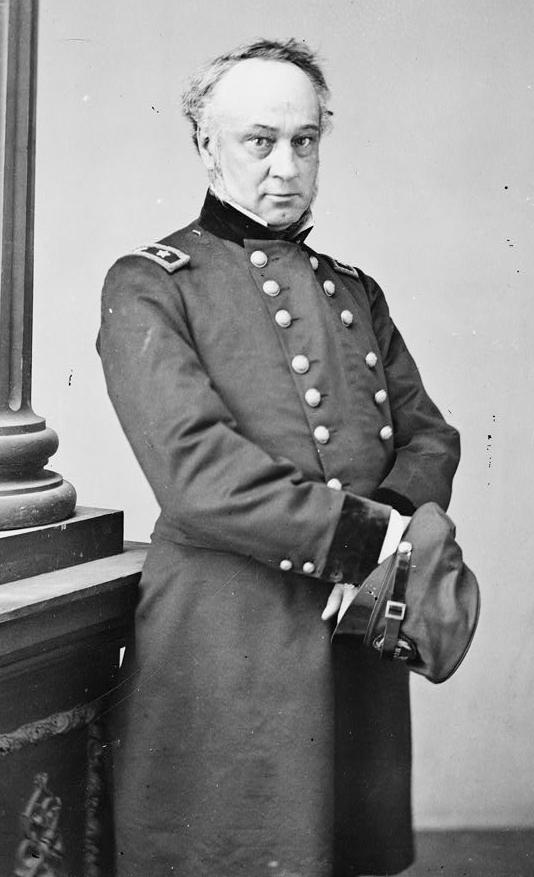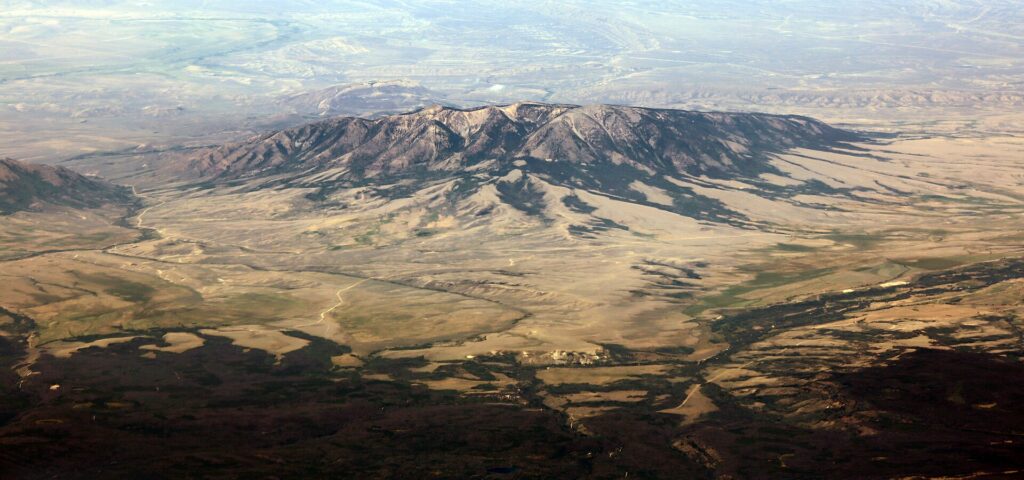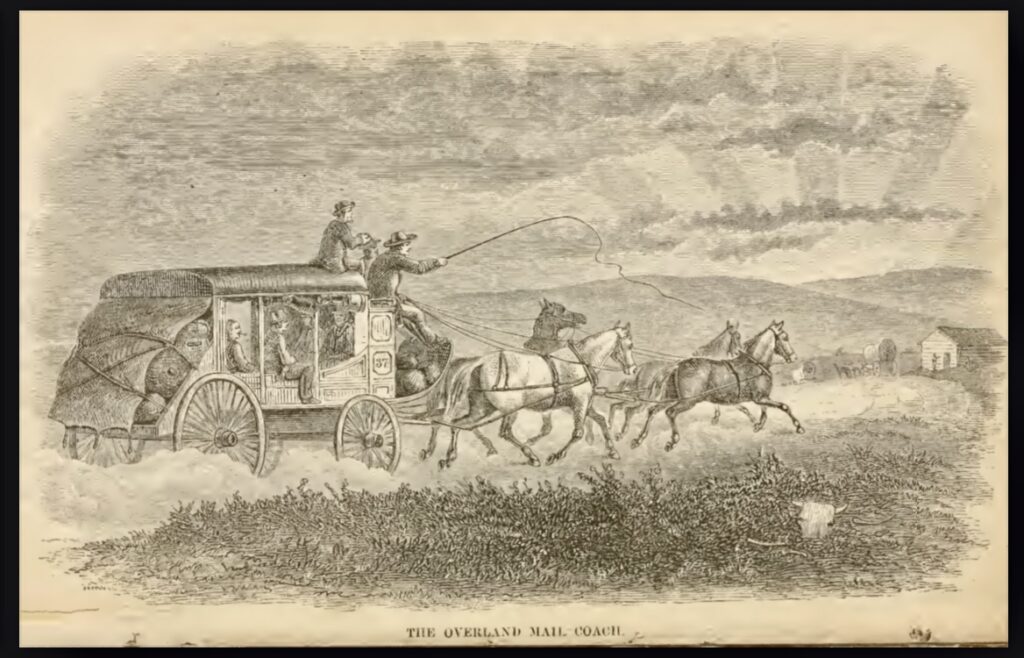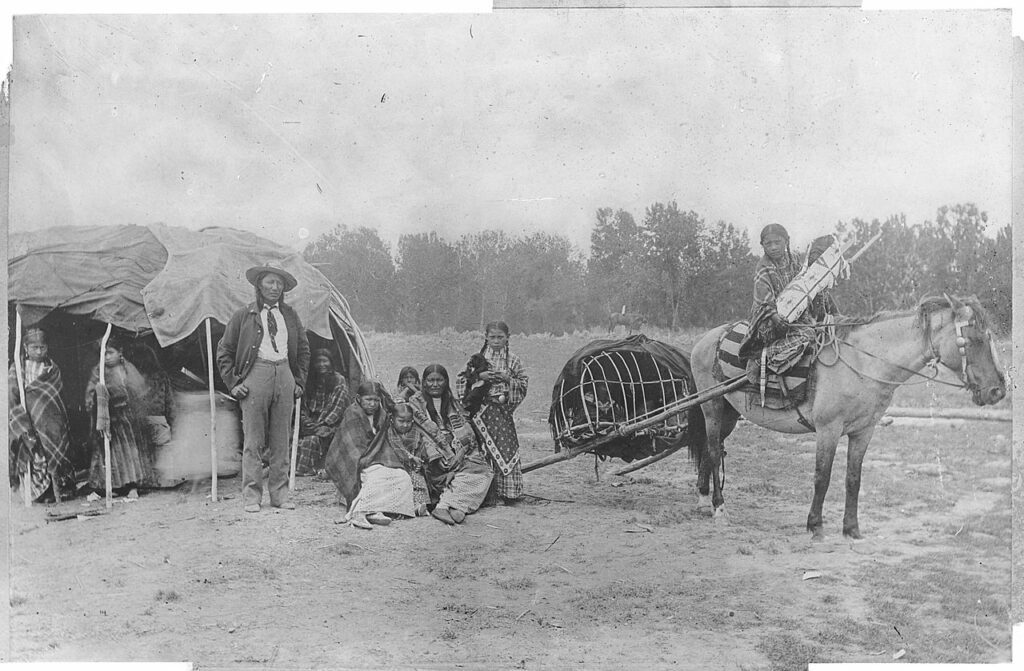Fort Halleck, Wyoming, offers a fascinating glimpse into the 19th-century American frontier, much like the historic Fort Laramie and Fort Bridger.
Established in 1862, this military post was crucial in safeguarding westward-bound emigrants traveling on the California Trail, a role similar to that played by the aforementioned forts.
Named after Major General Henry Wager Halleck, Fort Halleck became a key site during the Indian Wars, reflecting the broader military efforts of the United States, just as Fort Laramie and Fort Bridger had been pivotal in their times.
Situated near Elk Mountain, Fort Halleck protected settlers from potential threats and contributed to the strategic military landscape of the American West, complementing the network of forts that included Fort Laramie and Fort Bridger.
Today, the Fort Halleck Cemetery remains a poignant reminder of the lives intertwined with this historic outpost, standing as a testament to the era alongside the remnants and histories of Fort Laramie and Fort Bridger.
History of Fort Halleck in Wyoming
Fort Halleck was a pivotal military post during the mid-19th century. It served as a strategic location in the Union Army’s defense system and played a significant role in the Indian Wars of the American West.
Its history mirrors the broader military and socio-cultural evolution of the United States during that period.
Establishment of Fort Halleck

Camp Halleck was established on July 26, 1862, to protect emigrants traveling on the California Trail. Fort Halleck was later named in honor of Major General Henry Wager Halleck, a notable military scholar and leader.
Situated near present-day Elk Mountain, Wyoming, it became a critical site in the U.S. military’s efforts to safeguard settlers against threats.
Major General Henry Wager Halleck
Major General Henry Wager Halleck was a key Union Army leader known for his scholarly writings on military strategy. While Fort Halleck, Wyoming, was named after him to acknowledge his contributions, Halleck never visited the fort.
Indian Wars and Military Campaigns
During the Indian Wars, Fort Halleck was integral in various military campaigns.
The fort’s troops were actively engaged in conflicts with Native American tribes, reflecting the broader military efforts of the United States to exert control over the American West.
Fort Halleck Cemetery
The Fort Halleck Cemetery is one of the few remaining physical markers of the fort’s historical presence. Soldiers and civilians associated with the fort’s operation were laid to rest here.
The cemetery still exists, providing insight into the lives of the people stationed at this remote outpost.
Transformation into Public Domain
After Fort Halleck was deactivated in 1866, the land was eventually transferred to the Public Domain.
This allowed for settlement and development, demonstrating the fort’s evolving role from a military installation to part of the fabric of westward expansion.
Geographic and Strategic Importance

Fort Halleck’s location was pivotal in the safety and facilitation of major westward trails in the mid-19th century.
Its strategic location was key to protecting travelers from potential hostilities and aiding in the westward expansion.
Location Near Oregon and California Trails
Fort Halleck, located at the base of Elk Mountain in southeastern Wyoming, was positioned near both the Oregon Trail and the California Trail.
These trails were vital routes for wagon trains headed toward the western territories in search of land and prosperity.
- Oregon Trail: Approximate Distance – 5 miles
- California Trail: Approximate Distance – 6 miles
These proximities to the Fort made it an essential stopover for replenishing supplies and ensuring the safety of emigrants against potential threats.
Protection of Overland Trail
The fort was established in the Nevada Military District and was primarily tasked with protecting the Overland Trail, an alternative to the aforementioned Oregon and California trails.
The Overland Trail became increasingly popular in the 1860s due to its reputation as a safer and more reliable route.
Protection Measures:
- Military Presence: Continual military patrols
- Stage Stations: Establishment and safeguarding
With the advent of the Central Pacific Railroad, the Overland Trail’s importance diminished, but Fort Halleck remained a symbol of strategic military foresight in the American West.
Military Operations and Structure
Fort Halleck played a strategic role in military operations, providing critical support and defense during the conflict.
It served as a significant outpost for the U.S. Army, overseeing construction efforts and housing troops and commanders.
Military Reservation and Outpost
Established as a military reservation, Fort Halleck was crucial for protecting emigrant trails and the Overland Mail Route.
As an outpost, it witnessed the garrisoning of units such as the 11th Ohio Cavalry, tasked with ensuring the safety of travelers from hostile threats.
Construction and Buildings
Fort Halleck’s construction primarily utilized wood, and buildings were designed to meet the immediate operational requirements. Structures included barracks, stables, and a command center.
These wooden buildings were fundamental for the outpost’s functionality and the well-being of stationed troops.
Commanding Officers and Troops
Over its active years, Fort Halleck hosted various commanding officers. These officers managed the outpost and its military personnel, including strategic decisions and daily operations.
The troops, comprising units like the 11th Ohio Cavalry, upheld the outpost’s mission to secure the region and support U.S. military endeavors.
Communications and Transport

During its active years, Fort Halleck played a pivotal role in communications and transport, particularly in developing the telegraph line and providing mail service via stagecoach stations.
Development of Telegraph Line
Establishing the Telegraph Line at Fort Halleck enhanced communication across the Western frontier.
The line, connected with the Union Pacific Railroad, facilitated quicker message delivery, vital for military and civilian communication.
Mail Service and Stagecoach Stations
Fort Halleck was integral to the Mail Service as part of the Overland Mail Route.
Conversely, the Stagecoach Stations served as critical hubs for distribution, ensuring that mail and passengers could effectively travel to and from the outpost.
Local Economy and Settlements
Fort Halleck plays a pivotal role in Carbon County’s economic framework through its historical coal mining activities and the ongoing endeavors of local settlers.
Impact on Carbon County
Carbon County’s economy has historically been underpinned by resource extraction, with Fort Halleck contributing to this economic model.
Coal mining in the vicinity has fostered job creation and spurred secondary economic activities, offering stability for local communities.
Coal Mining and Local Industry
Coal Mining: Fort Halleck’s coal mining operations were once a central aspect of the town’s economy. The local industry was driven by coal reserves, and extraction employed a significant proportion of the population.
- Local Industry: Beyond mining, the town supported various service-based businesses essential for daily life. These industries ranged from retail to dining, and they mainly operated on private property, sustaining the livelihood of local settlers.
Explore More: 15 Historic Forts in Wyoming
Cultural Impact and Legacy
Fort Halleck played a critical role in the westward expansion of the United States and now serves as a historical touchstone for academic study and local heritage.
Fort as Symbol of American Expansion
Fort Halleck, established in the 1860s, was an important military station during accelerated westward movement and growth.
Its existence symbolizes the era’s trading posts, which supported the expansion by providing necessary supplies and security to pioneers.
The fort’s role in protecting the overland emigrant trails symbolizes the larger narrative of American expansion.
Historical Marker and Society
The site of Fort Halleck has been designated as a historical marker, acknowledging its significance in American history.
Preservation efforts by the Historical Society contribute to public awareness and education about the fort’s place in the past.
Visiting such a marker can offer individuals a tangible connection to the events that shaped the nation’s frontier history.
The Historical Society plays a key part in maintaining the fort’s legacy, ensuring the knowledge surrounding these military stations is accessible and preserved for future generations.
Interactions with Indigenous Peoples

Fort Halleck, established in the Wyoming territory, was a focal point of significant interactions with Indigenous peoples, specifically the Plains Indians. These interactions included both military conflict and strategic movements.
Conflicts and Indian Raids
During the mid-19th century, the area surrounding Fort Halleck was the scene of numerous confrontations between the United States military and Plains Indian tribes.
Indian attacks and raids were responses to the influx of settlers and the establishment of military outposts such as Fort Halleck.
One of the most notorious incidents was the Sand Creek Massacre in 1864, which, although not directly involving Fort Halleck, epitomized the heightened tensions and violent confrontations of the era.
| Year | Incident | Tribal Affiliations | Military Response |
|---|---|---|---|
| 1860s | Indian Raids on travel routes | Various Plains Tribes | Defensive actions at outposts like Fort Halleck |
| 1864 | Sand Creek Massacre | Cheyenne and Arapaho | Third Colorado Calvary |
Military Movements
Strategically positioned, Fort Halleck played a role in the movements of Indian war parties and military expeditions aimed at creating peace or suppressing resistance.
It acted as a base for troops venturing into territories known for resistance. Additionally, the fort became a staging ground for patrols and was involved in escorting parties such as the Bozeman Trail expeditions.
Decades later, in a move towards peace and cohabitation, the establishment of Fort Washakie marked a significant transition. It became the headquarters for negotiations and relations with the Shoshone and Bannock tribes.
| Year | Movement | Purpose | Outcome |
|---|---|---|---|
| 1860-68 | Troop Deployments | Peacekeeping and reconnaissance | Varied military engagements |
| 1878 | Fort Washakie Establishment | Diplomatic relations with tribes | Peace and settlement treaties |

Cory is a website owner and content creator who enjoys fishing, history, coin collecting, and sports, among other hobbies. He is a husband and father of four.
Romans 15:4 For whatever was written in former days was written for our instruction, that through endurance and through the encouragement of the Scriptures we might have hope.


The Sand Creek Massacre was not done by the 7th Calvary it was committed by the Colorado Volunteers under Chivington
Thank you for pointing out the oversight. I have changed the statement to reflect the Third Colorado Calvary.